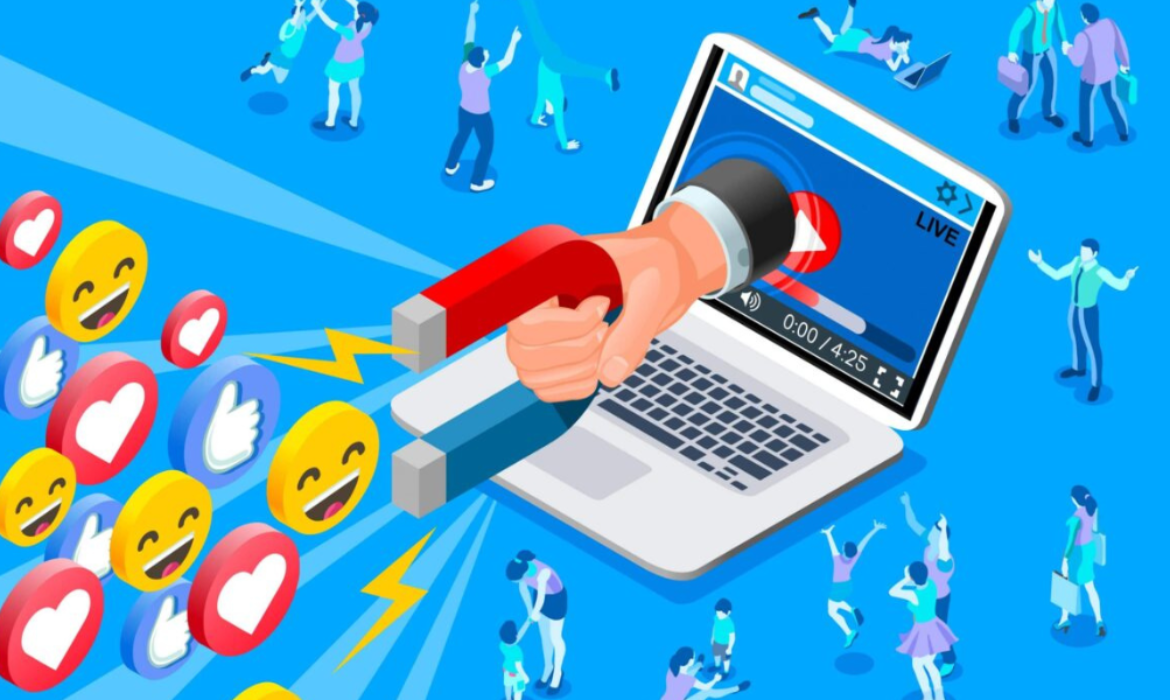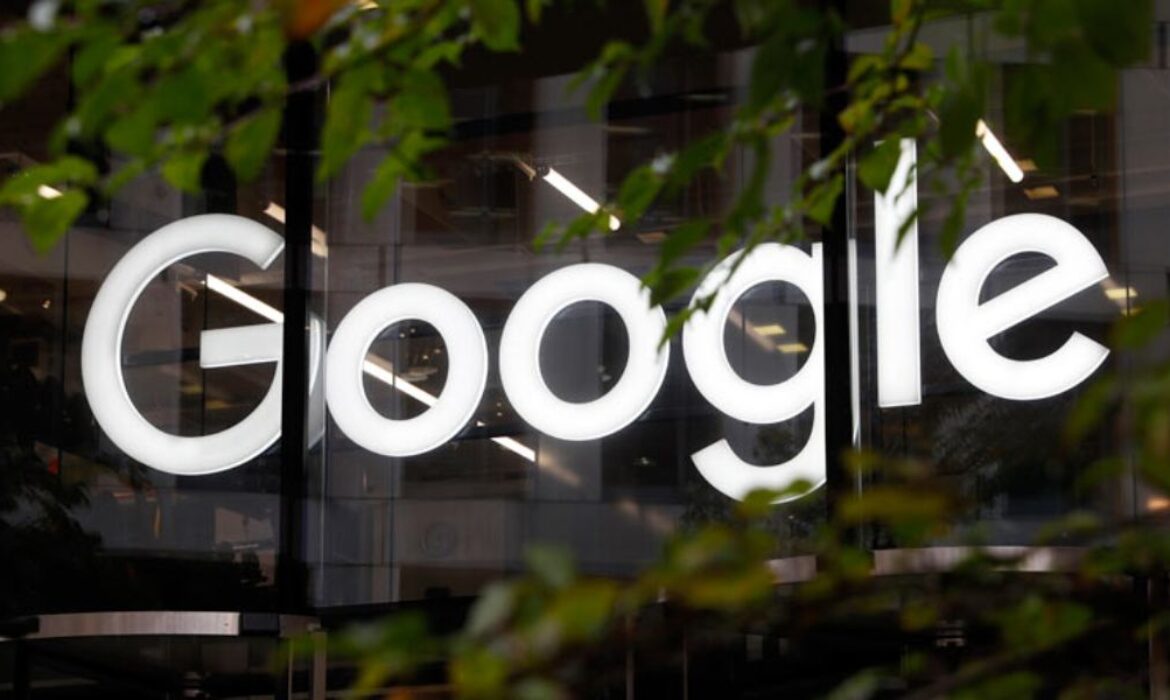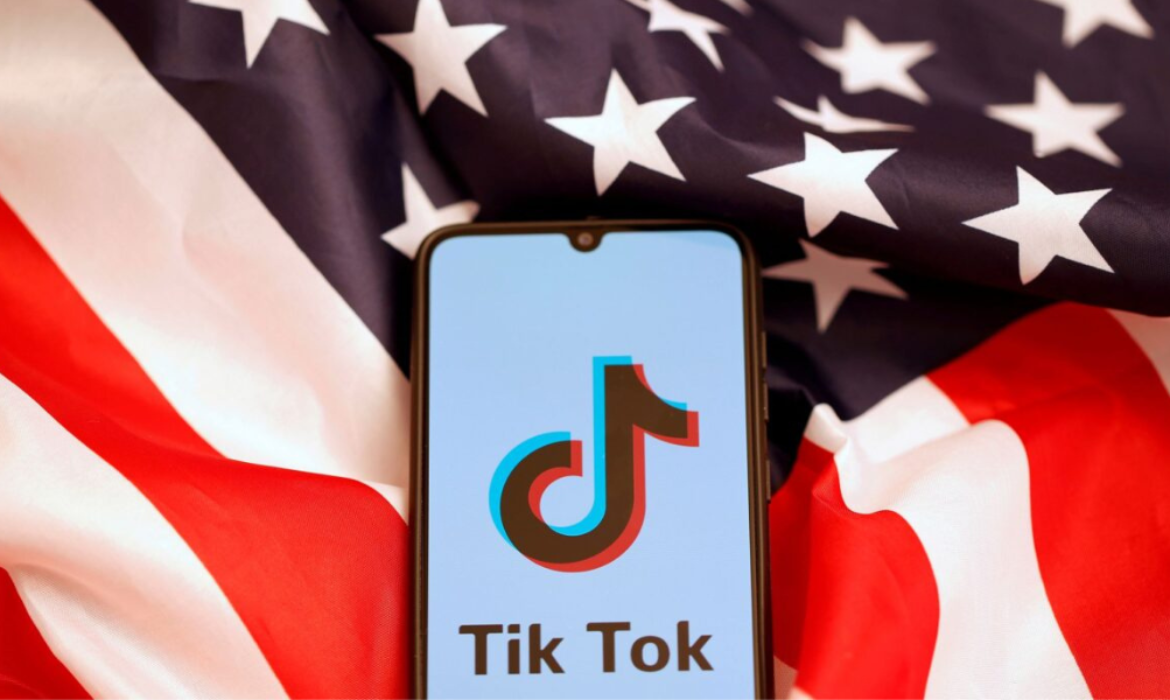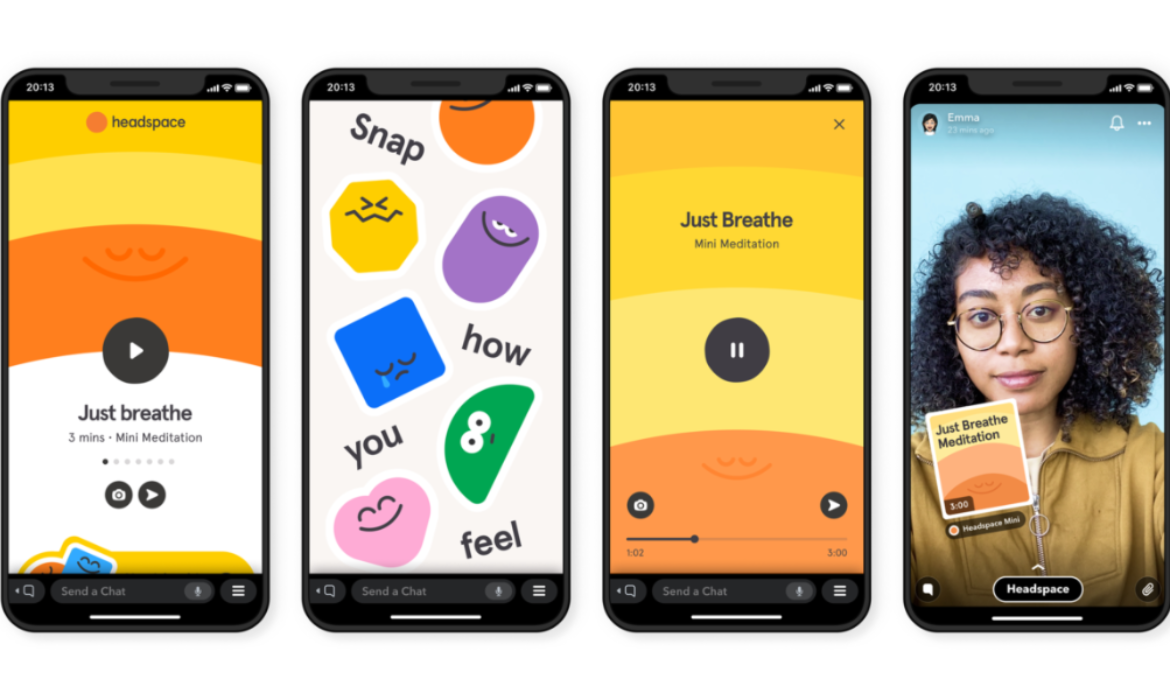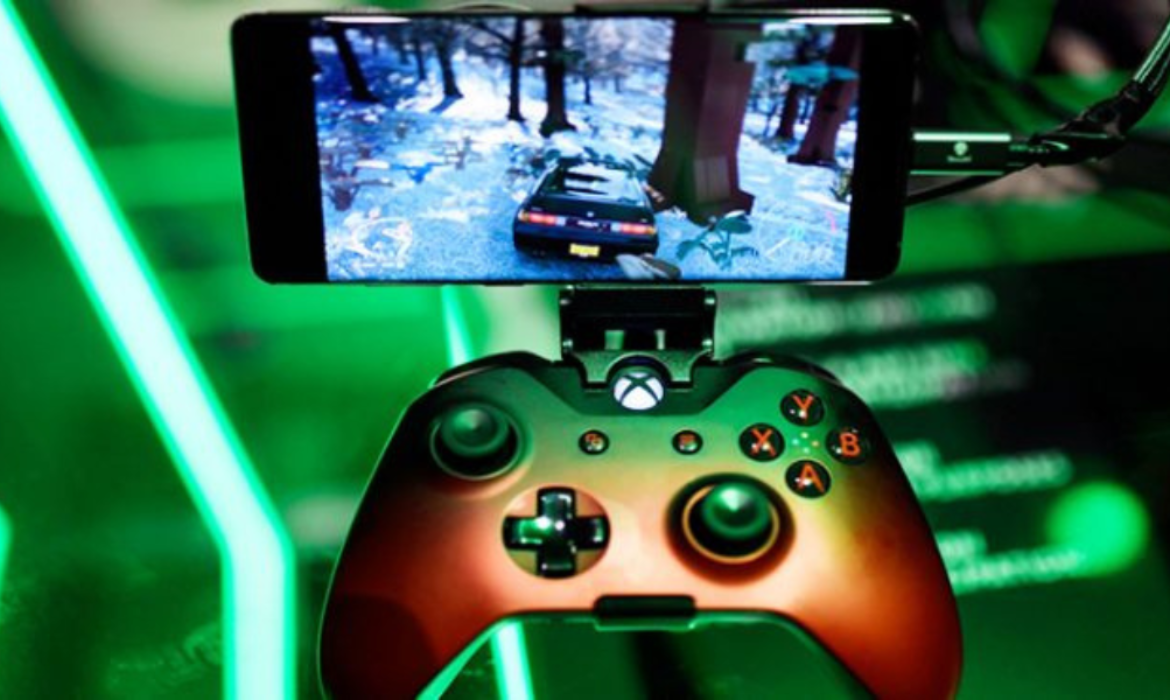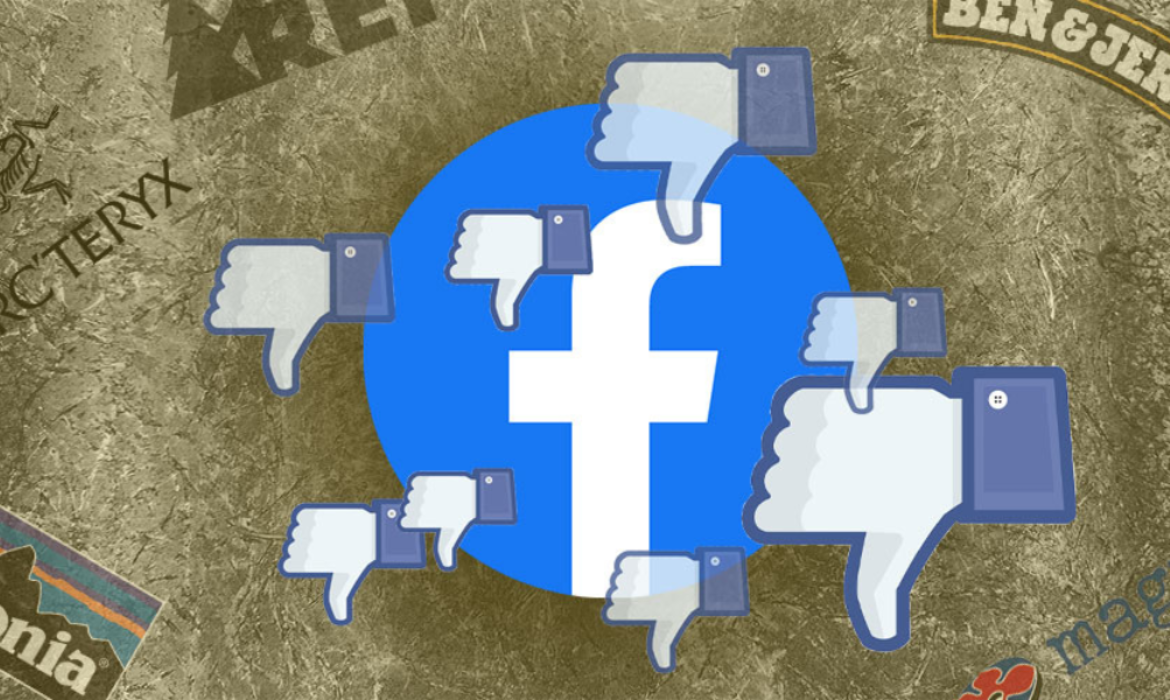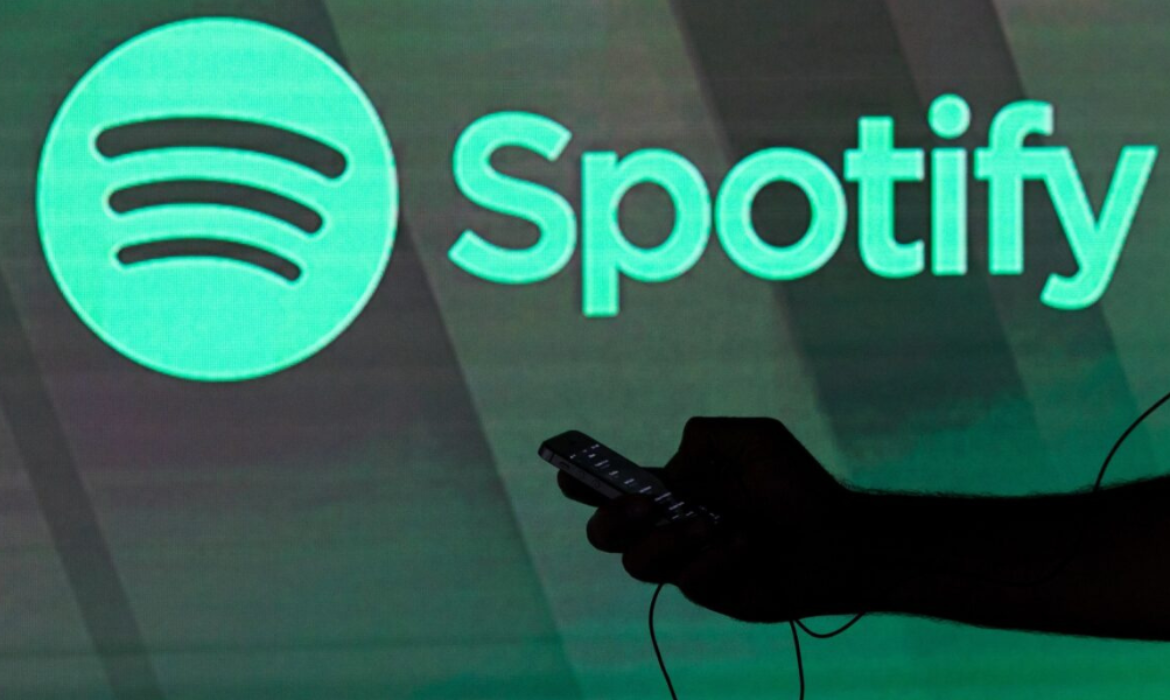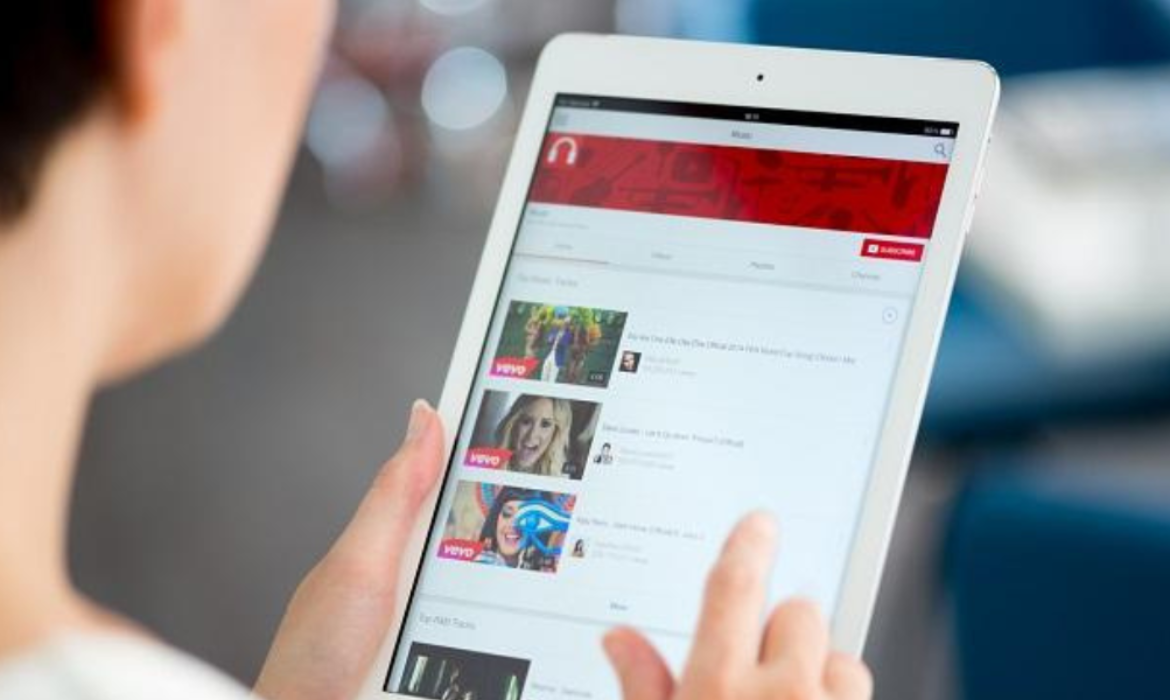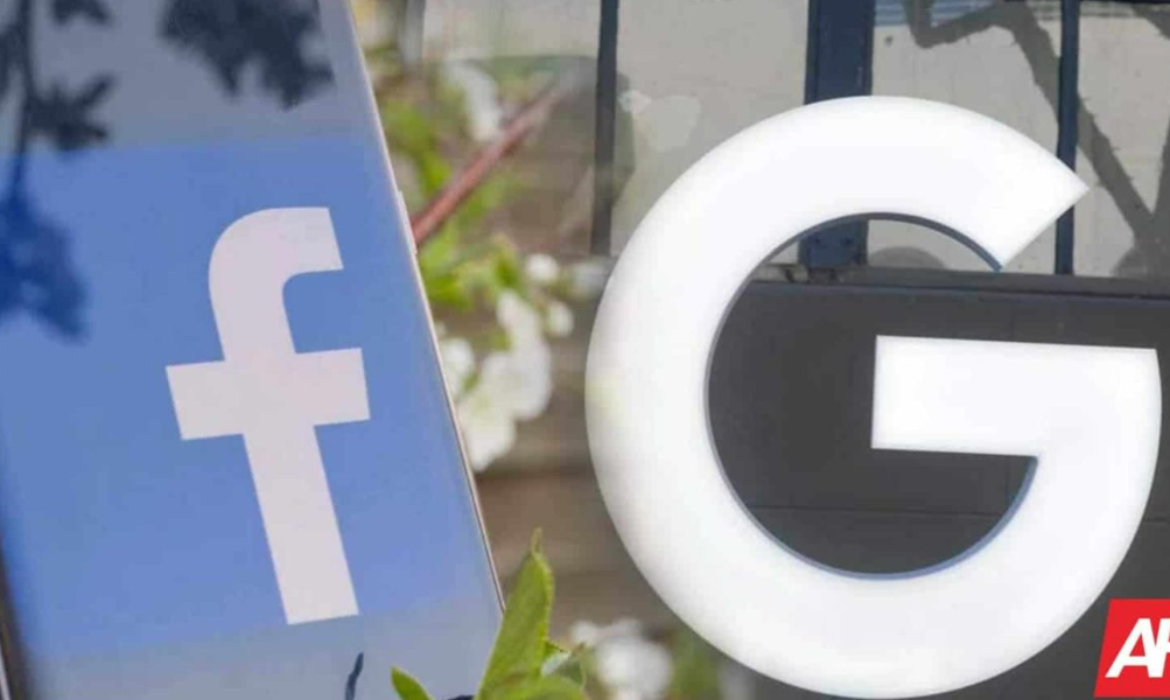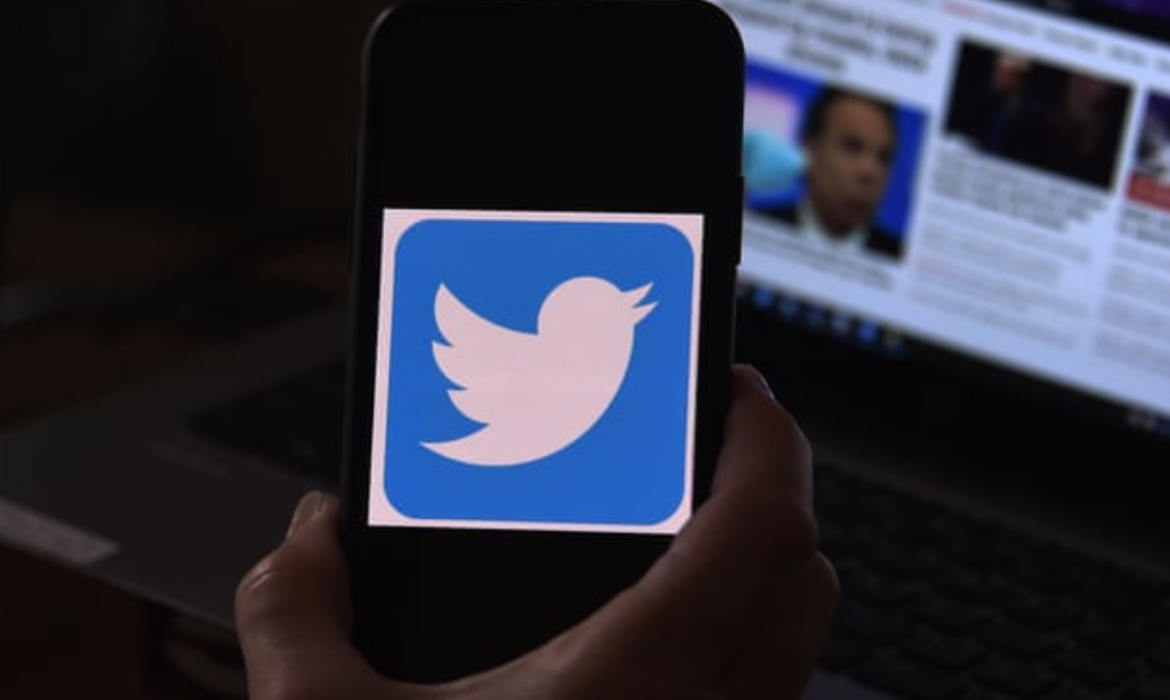Influencer Marketing Comes Back Strong Amidst Pandemic Crisis
The pandemic had disrupted every industry forcing marketers to shift their plans and thrust into an uncertain and swiftly changing landscape. Brands are looking for independent creators than productions due to pandemic restrictions such as sheltering in place.
The industry was in troubled waters as pandemic had put a pause on all the plans, took many industries out of the market, and affected many influencers’ content. Some marketers even continued with Facebook boycotts or social media pauses.
It has been quite a challenging period for influencers. However, the influencer industry is recovering and bouncing back, showing incredible resilience and creativity. Consumers are spending more time on social media interacting with content creators after being cooped up at home. With budgeting constraints and large scale, ad production is difficult, brands are turning to independent creators for a quick, less-expensive, and easy-to-produce creative content. This is providing the much-required boost to the influencer marketing industry.
Numbers Says It All
Social Bakers released the State of Influencer Marketing Report and found out that there is a fall in sponsored content from March to May and a pivot towards micro-influencers. Yuval Ben-Itzhak, CEO, Socialbakers said,
“Nano and micro-influencers are now seen as high-value resources, bringing high impact without the big price tag of macro and mega influencers. As budgets remain tight, savvy brands will likely continue to expand partnerships with these smaller influencers as part of a smarter social media strategy in the wake of the continuing worldwide pandemic.”
Another finding by Shareablee, an audience-based social media measurement company states that branded content from influencers on Facebook, Instagram, and Twitter was up 21% in July from March despite a decline in sponsored influencers post- 87% on Instagram and 57% on Facebook in April compared to last year.

Image Credit: Adage
Influencer marketing has changed in several ways during the outbreak. There is a shift in consumer behavior more towards digital in this pandemic due to the lockdown. The engagement with branded influencers posts grew 5 times faster to 57.2 million total actions in July compared with March, according to Shareablee.
A rise in sponsored posts is seen since July after the volume fell almost 17 percent in March and another 6 percent in April reveals Data from CreatorIQ.
This proves that the industry is still very strong and influencers are quick to adapt with conversion rates increased across platforms in the pandemic. As quoted in Adage, Melissa Rosenthal, co-founder at Circle said,
“Brands took a few weeks to figure out how to position themselves for a new world. Now I’m seeing probably 5 times the outreach I was seeing pre-pandemic. Small brands, large brands, new brands, everyone.”
The pandemic is benefitting the influencers with the increase in viewership as alternate media or sports events have declined drastically. Presently, influencers are the only production houses that are open and can make new, creative, and custom content for brands amidst pandemic restrictions. According to the eMarketer report, followers are looking for more DIY activities and short videos.

Image Credit: eMarketer
Clorox Followed The Influencer Way!
Clorox.Co is getting back to sponsored influencer work after a pandemic pause. Through the Reach Agency, Clorox recently teamed up with YouTube comedians The Try Guys to market its latest scent of Fresh Step cat litter. In the video, the creators open the world’s smelliest foods to demonstrate the ability of new Fresh Step cat litter with Febreze Freshness and Gain Scent covers the odors. The video garnered nearly a million organic views on its first day on August 15. The partnership with Try Guys who have 7.3 million subscribers is Clorox’s third venture into influencer-led demo-tainment.
Clorox shifted the plan of conventional ads to influencer content while planning the campaign in March as the pandemic situation would make it hard to produce ads. Another major decision taken by the brand was to boycott Facebook and Instagram advertising for the remaining year while the project was ongoing.
As reported in Adage, Deb Crandall, director of marketing and studio lead said,
“We have had to ask our partners not to post this on their Facebook or Instagram channels, and we’re not putting any paid support behind it. It definitely takes a channel out of the mix to reach our audience, but that’s why we’re excited about the results we’re seeing. To reach almost a million views without Facebook or Instagram makes us think we’re onto something.”
Finally, brands and creators are learning to operate in the ‘ new normal ’. In the time of crisis, savvy social media influencers are engaging with their followers in a fairly two-way communication that even brands could never have on their own.
Innovation In Google During The Tough Times Of COVID
While most of the brands are struggling to survive during the tough times of pandemic, Google has set its goals right for the whole year. It is innovating itself without any trouble. Every month Google targets to enhance itself, according to the growing demand of the society. Google makes sure, that it fulfills the need of its users by providing them with exactly what they desire.

Image credit – Business Insider
Recently, Google introduced two new features for its search portals. One of the features is designed, and dedicated to the Black community. The feature will help in the upliftment of the community in society and will aim to end the injustice against them.
Due to the rise of anger in the community against the centuries-long injustice experienced by the community, several brands came forward to show their support towards the community. Google was amongst them.
#BlackLivesMatter!

Image credit – change.org
To fulfill his promise, the CEO at Google, Sundar Pichai recently added a feature to the map and Google search listing.
This feature is launched to empower the Black community. The feature will highlight businesses owned by the Black community helping them grow. However, only those members can avail of the benefit whose business has verified profiles in the US. Also, the business must be owned by a member of the black community.
Those businesses highlighted under this feature will be marked by an image(as shown below). The symbol will signify that the business is owned by a member of the Black community.

It is said that the step was taken to provide a financial boost to the community. It is a foreseen step to finally end the orthodox discrimination towards the community. Google is also partnering with U.S. Black Chambers, inc. To provide better features like Analytics helping the businesses groom and blossom.
In a statement regarding this following statement was issued by Google:
“As part of our $300 million commitment to support under-represented entrepreneurs, we’re integrating the attribute into the digital skills training programs we offer Black business owners through Grow with Google Digital Coaches. And through Google for Startups Accelerator for Black Founders, we’re starting our work with the first cohort of 12 startups.”
Google is keen to develop the feature even more and is seeking ideas internally. According to the management, they have already received more than 500 creative ideas to get this model to develop more brilliantly.
The company is also working on better and much strict “Policies against hate and harassment”
“About this ad”- More power to the user!

Image credit – 9to5Google
With a more transparent approach towards their users, Google has launched a new feature popularly known as “About this ad”.
To implement this feature Google will be launching new tools. It will help the users gain information about the advertisement they are receiving. It will help enhance security and will increase user privacy on the digital platform.
According to Google spokesperson, the vision is designed for a “thriving internet where people around the world can continue to access ad-supported content, while also feeling confident that their data is protected”.
“But in order to get there, we must increase transparency into how digital advertising works, offer users additional controls, and ensure that people’s choices about the use of their data are respected not worked around or ignored.”
Read More: Google Ends All Gossips: Revealed Fee Structure For Advertisement Tools

Image credit – AdEspresso
For a long time now, tech giants like Google are have faced a lot of criticism. Most of those were linked to their explicit behavior when it comes to money and user privacy. After being criticized and called upon several times by different government authorities for blind approach in the business during the usage of advertisers’ money, Google has finally decided to be more transparent with its business policies and proposals.
Therefore, Google shared a list of pricing for its tools used by advertisers for the advertisement. It was a huge step by Google, since before this release, advertisers were kept in the dark about the spent of their share of the money, and the profit earned by Google.
The tools for which Google revealed the prices include, DV360, Google Ads, ad manager, and its publisher tech.
The revealed prices are as follows:
These prices were revealed by Google in a series of articles and blog posts.
The prices are in the ratio of percentage for a $1 amount spent by an advertiser on an advertisement, divided between the publisher and Google.
- Google tech: Publishers – 69%, Google – 31%
- DV360: Publisher – 87%, Google – 13%
- Ad Manager: Publisher – 82%, Google – 18%
- Google Ads: Publisher – 86%, Google – 14%
- Ad sense by Google: 68% share taken by Google of the total spent by the advertiser.
Google has never been so transparent in regards to its prices, the sources say that this new transparent face of Google is due to the ongoing legal hearing conducted by the state attorney general and the Department of Justice.
Read More: Google Updated Its Demand-Side Platform With DV360!

Image credit – marketingland
Innovation has always been the motto of the company. To make sure that the advertisers at Google are equipped with the best tools available in the market, it recently launched its new self-service toolkit known as Display & Video 360.
The tool is launched to change the landscape of the advertisement. Display &Video 360 is a gift to its advertisers by Google.
Earlier, advertisers used the tools to make a hypothetical projection while running an online marketing campaign. The most crucial question that bothered the advertisers was the amount of audience that they will reach with the campaign. To make sure it’s no more a hit and try show for the advertisers, Google launched DV360.
With the DV360, the advertisers can now create a new campaign and check its reach to the audience as the tool provides a duplicate view of the campaign. The duplicate view will help the advertisers view the exact or say a more accurate number of audiences that they will reach with the campaign. Hence, no more blind bets!

Image credit – Matech Today
The tool has better forecasting capabilities, giving the advertisers a glimpse of the future for their campaign. It is also a better solution for the media planners as it provides them with a large proportion of benefits as better access to the tool as they always have a larger role to play.
The most crucial answer answered with the tool is, “how many unique people can I expect to reach with my overall campaign across any open auction display and video inventory as well as YouTube?”
According to Anudeep Pedditi, Programmatic Manager, OMD NZ:
“Once we commit to a reach objective, neither underachieving nor overachieving is an option. Display & Video 360 gives media planners the accuracy they need to effectively plan across all our programmatic campaigns.”
The Tools main aim is to provide the following features to its advertisers:
-
-
-
-
Focus
-
Options For Buying
-
Optimization And Reporting
-
Security
-
Conclusion
-
-
-
Read More: How Google’s Page Experience Will Change the Face of SEO in 2021

Image Credit – Edkent Media
Google will launch a new algorithm for its page experience and design. The new model will be based on user experience.
The new algorithm will surely affect SEO and web traffic. Therefore, to make sure that the advertisers are not affected by the changes, Google has announced that they will apply the changes in 2021. They have promised to inform upfront, at least six months beforehand.
An early reminder will help advertisers to prepare themselves for the changes.
However, Google made it clear that the new algorithm will be even stricter in ranking the web pages. If the user experience of a web-page is poor, Google will not rank the page on to the top list.
Google has also published a detailed document dedicated to the page experience criteria.

Image credit – Cardinal Path
The new algorithm will consist of some core vital features. This feature includes the following:
- Largest Contentful Paint (LCP): Measures the loading performance of your webpage.
- First Input Delay(FID): Measures the user interaction with the page.
- Cumulative layout Shift: Checks the stability factors of your webpage.
The Accelerated Mobile version (AMP) will also play a major role in the ranking of your page, as will be a metrics for the page experience.
Also, good content will always play a lead role in the page ranking.
As per a statement:
“While all of the components of page experience are important, we will prioritize pages with the best information overall, even if some aspects of page experience are subpar.
A good page experience doesn’t override having great, relevant content. However, in cases where there are multiple pages that have similar content, page experience becomes much more important for visibility in Search.”
Hence, entrepreneurs, startups, and businesses should be well prepared for the new changes.
Read More: Every 2020 Google SERP Feature Explained: A Visual Guide

Image credit – Pinterest
Have you ever imagine the amount of traffic Google experience in a minute, month, or year?
Well, here are some fun facts, every second there is an approximate of 63,000 search queries entered on Google search.
Also, near to 2 trillion searches are conducted every year!
Isn’t it amazing? However, you might ask, why does it matter?
Let us understand!
Google holds an approximate 72% market share of search engines. To make sure that your webpage is listed on the top of the list of Google search results you must have an understanding of Google SERP (Search Engine Result Page).
What is SERP? And, what all it provides to the advertisers on Google?

Image credit – OverthinkGroup
The Search Engine Result Page of Google has gone through a lot of changes according to the user view. It has become much more dynamic, relevant, personalized, and helpful.
Now the search engine of Google is equipped with several enhancements that use structured data. The search page consists of visual enhancement, better index, and optimization for the website. You must be aware of all these changes if you are planning for a better organic ranking for your website.
Here is the new enhancement for the search page of Google:
- Direct answer Box
- Rich Snippet
- Rich cards
- Knowledge Graphs
- Knowledge Panels
- Local Pack
- People also ask
- Image Pack
- Site Links
- Newsbox
You must be equipped with the knowledge of these for better results in organic ranking.
Read More: Rejoice Small Retailers: Selling Products is Now Free On Google Shopping

Image credit- Shopping&payments
MSME’s got adversely affected due to the widespread of COVID-19. Several small and medium scale businesses have lost their source of income due to the sudden breakthrough of this epidemic.
Therefore to make sure that these businesses sustain the effects of the crisis, Google is allowing small retailers to list their products for free on Google Shopping.
Explaining this decision, Bill Ready, President of Commerce at Google cites the fact that it is difficult for struggling businesses to pay for Google shopping listings at this time.
“And as consumers increasingly shop online, they’re searching not just for essentials but also things like toys, apparel, and home goods.
While this presents an opportunity for struggling businesses to reconnect with consumers, many cannot afford to do so at scale.”
Earlier, Google charged its customers as Pay per click (PPC). It can also be seen as a tactic by Google to compete with Amazon in the market of e-commerce.
Read More: Privacy Sandbox By Google Shows Backdoor To The Third-Party Cookies.

Image credit – https://searchengineland.com/figz/wp-content/seloads/2020/02/privacy-sandbox-cookie-stock-1920.jpg
Two years ago, Google announced that it will discontinue the usage of third-party cookies in its browser, which is Google Chrome. Since the announcement, several speculations surfaced, to understand its effects on internet traffic and advertisement. However, Google seems determined about the elimination, and this year Google announced “Privacy Sandbox” a step towards the replacement of third-party cookies.
It is developed to provide a secure browsing experience to its user.
According to a spoke person from Google, “This is an early-stage concept, and we don’t have more details to share right now, We plan to publish updates and progress in GitHub as part of the process.”
The concept uses a new algorithm designed by performing “Bit Request Signal Experiment”.
Privacy Sandbox was launched in August. The idea was to innovate ad recurrence and behavioral advertising. It aimed to help them work on the web without using third-party cookies. A mega event was organized, 163 giant tech organizations like Apple, Facebook, Axel Springer, The Washington Post, Criteo, The Trade Desk, and even Google participated. All are requested to share their views via. World Wide Web Consortium or GitHub to help the project succeed.
However, according to the Google developers, it is still in its initial stage and there is a lot of work that is needed to be done in this field.
Read More: Google pledges $800 million to coronavirus relief, including Ad credits

Image Credit – BusinessInsider
Google CEO Sundar Pichai explained:
“As the coronavirus outbreak continues to worsen around the world, it’s taking a devastating toll on lives and communities. To help address some of these challenges, today we’re announcing a new $800+ million commitment to support small- and medium-sized businesses (SMBs), health organizations and governments, and health workers on the frontline of this global pandemic.”
The commitment includes:
- WHO and other health organizations will get $250 million for advertisement.
- MSME’s and NGO’s will get $200 million.
- An additional $15 million in cash will be granted by Google.org to non-profits to bridge the gap between SMB’s.
- Those small businesses that are already active for a year with Google advertisement will get the help of a total of $340 million in Google ad. They will receive the credit in their accounts and can spend it by the end of 2020.
- The academic and research institutions in the field of COVID research will get $20 million.
- Financial support will be provided to the organizations to increase the production capacity for life-saving equipment.
However, not everything went great for Google during this tough time of COVID:
Read More: Google Cuts Marketing Budgets by 50%, Freezes Hiring.

Image credit – Brayve Digital
Key Points
- Budget cuts and hiring freezes across marketing and across Google.
- For the second half of 2020, Google is cutting its marketing budget to 50%.
- The cut is due to the reduced expenditure on advertisement by the brands during the time of the crisis.
- The development comes in less than a week from where Google is scheduled to discuss Q1 2020 results on 28th April.
According to a statement released by email:
“There are budget cuts and hiring freezes happening across marketing and across Google…We, along with the rest of marketing, have been asked to cut our budget by about half for H2.”
A company spokesperson said in an emailed statement to CNBC,
“As we outlined last week, we are re-evaluating the pace of our investment plans for the remainder of 2020 and will focus on a select number of important marketing efforts….We continue to have a robust marketing budget, particularly in digital, in many business areas.”
…we continue to invest, but will be recalibrating the focus and pace of our investments in areas like data centers and machines, and non-business essential marketing and travel.”
Read More: Google Withhold Programmatic Data, Advertisers Pulls Back Ad Spend

Image credit – Search Engine Land
As quoted by Digiday, the Head of Display at the U.S based retailer said,
“Google’s ad exchange didn’t make the list primarily because they’re not willing to give us any transparency or data around not only their take rates on our media sped but also anything we could already pull from our demand-side platform.”
“We’re seeing Google’s ad exchange become slightly less of the total pie,” said Jay Friedman, president at programmatic agency Goodway Group to DigiDay.
”I don’t have a percentage but it’s less but not significant.”, he further added.
The advertisers registered their doubts and raised concerns regarding the non-transparent behavior of Google. However, this must have been resolved after the release of the price list for its advertising tools by Google.
TikTok Market Struggles In Midst Of Trade War Between USA and China!
The uprising trade war between the USA and China is not a new issue in the market. Everyone knows about the ongoing trade war between the two countries. Among these tense scenarios, TikTok is fighting hard, not to get trapped in between. However, it is hard to avoid the damages to the ship when you are in the sea and get dragged in a sea storm.
After facing banishment from its largest user market, i.e. India, now TikTok is facing the threat of getting banned in the USA. Recently, Secretary of State in the US, Mike Pompeo announced, that the USA is in the process of banning the Chinese application TikTok, in the USA. This announcement came soon after India banished 59 Chinese apps from its market.
USA President, Donald Trump’s re-election campaigns clearly showed dissatisfaction with China. The campaign showed support to Pompeo’s statements, supporting the banishment. One of the campaign ad slogan used by the Trump campaign announced: “WARNING: China is spying on you.” This campaign was visible on Facebook and requested users to sign a petition in support of the banishment of TikTok.

However, in response to this, the TikTok spokesperson blamed Facebook. They said that Facebook is charging money for the campaign and defaming TikTok to uplift its product which is Instagram Reels.
Instagram recently launched this new feature on its platform. The feature also allows the users to create short videos, just like TikTok.
Although TikTok is among the less favorable advertising option among the advertisers. Even though TikTok has or say had 2 billion users, still due to the high price of advertisement advertisers less likely trusted TikTok for advertisement purposes. Therefore, not many advertisers are concerned about the war and banishment on the Chinese application. Most of the advertisers stated that the TikTok was still in an experimental phase of their advertisement strategy.

Image Credit – Twitter.
One of the main reasons for that could be the reason for TikTok being new in the market. It has been only a year since TikTok provided the option for advertisement on its platform. However, instead of being new TikTok received several positive responses from the advertisers. The brands were impressed with the growth and advertising solutions provided by TikTok. However, still, TikTok needs to climb multiple stairs to reach the moon it is dreaming, since the standards of the market are set quite high.
The most important factor related to TikTok is brand safety. Due to its origin from China, many brands are keeping their distance from the platform. They intend to maintain this distance even if TikTok moved its operations from China.
According to TikTok, they removed nearly 49.2 million videos from their platform. These videos did not follow their community guidelines. They did it between the time frame of 1st July and 31st December. They also claimed that nearly 89.4% of the removed content was never viewed by anyone on the platform, hence this content never received any reviews. However, around 5 million videos with exploited content, that did not follow the terms and services policies of the platform got viewed by people, raising another concern in the market.
To make sure that the company provides a safe-advertising solution to the advertisers, the company has decided to work with several different third-party clients like Openslate, Doubleverify, Integral Ad Science, and Moat.
A spokesperson from TikTok stated, “We’re in the early stages of working with these partners and will be able to provide more information at a later date, but we can say that advertisers are excited by these partnerships and the controls that we are seeking to provide for their campaigns.”
A survey found that the most downloaded users of TikTok are between 6-18 year old. This data is from the UK, from the year 2019. Also, during the period of lockdown, 14% of children between the age of 3- to 10 years downloaded TikTok, and 31% were between the age 13-18 years of age. The data was issued by the U.K communications regulator Ofcom.

Image credit – Sensor report.
According to an ad buyer, TikTok violated the policy of the Children Online Privacy Protection Act, when the application was known with the name of Music.ly. Later, TikTok paid $5.7 million to settle the Federal Trade Commission allegations. The allegations were made due to the collection of personal information from children, aged under 13-years. However, Musical.ly was ordered by the authorities, demanding the removal of videos uploaded by the children under the age of 13 years. As these videos were uploaded, without the concern of the child parents.
Brendan Gahan, partner and chief social officer at digital agency Mekanism, issued a statement stating, “that is a bad way to introduce yourself to a new market.”
When announced, Mekanism and its clientèle did a review of the details of the violation. The news regarding the violation stated: “planned activations under the microscope,” said Gahan. However, the Makanism discovered that the mistake was made by Music.ly.
To be clear, TikTok launched in 2016, and ByteDance purchased Musical.ly in 2017 and later in 2018 transferred its users to TikTok.

Image Credit – influencermarketingh.
However, TikTok still faces a threat to COPPA. Federal Trade Commission and the USA. Department of Justice is looking into the claims filed that the short-video application is not deleting the videos of underage children on its platform. If these claims are found to be true and the commission and the Justice Department of the USA find any such content which includes children under age the age of 13 years, then TikTok will have to face severe challenges in the USA.
However, according to TikTok, it takes “safety seriously for all our users,” and also offers a “limited app experience” in the USA.
Hence, providing extra safety experience to the users in the USA. TikTok also has a 12+ ranking on the app store. Which means parents can block the application for their children, who are under the age of 13.
Reports suggest that the short video application is planning to generate a revenue of $500 million from the USA market. To achieve that TikTok has hired sales representatives. It has also launched its self-service advertisement tool. These tools will help advertisers to create a high-end graphic and advertising content with sound. Also, TikTok is now aiming for the SMEs, to make sure it attracts the small and medium enterprises TikTok has launched several luring plans for the business so that they can start advertising on its platform.
Also, advertisers who have boycotted Facebook are looking for a new platform to get started with their advertisement campaigns.

The increase in the audience on the platform is one of the greater factors that the short video platform is attracting an audience for the advertisement.
Apart from the condition of banishment on the application, all the other factors play in favor of the app.
According to Amy Luca, chief executive of influencer marketing platform theAmplify, “There’s a cautious tone but there’s not a big concern for brands right now.” If the application saves itself from the trade war between the US and China, “At the end of the day, advertisers will want to be where their audience is spending time and right now, if you are looking to engage a young audience, TikTok is a good strategy.”
Minis Are Here, Miniature Third-Party Apps In Snapchat
Snapchat Minis, bite-sized third party-apps built within Snapchat rolled out on Monday. Snapchat first previewed Minis, a lightweight, built on HTML at the 2020 Partner Summit back last month.
Four out of seven Minis debuts across the platform. These mini-apps are going live:
Meditation tool Headspace, studying collaboration tool by Tembo, an interactive messaging tool Prediction Master and Let’s do it, a mini-app by Snap.
Other minis apps -festival trip planning by Coachella, Atom’s movie ticketing, and student’s schedule planner Saturn are yet to go live.
The Easiest Way To Meditate Is With Headspace Mini
Headspace mini is a part of the initiative “to help support the mental health and emotional wellbeing of SnapChatters, said a Snap spokesperson.
Why it matters
The user base of Snapchat is one of the youngest on the social. Media as it reaches more under 30 years old who are coping up with missed schools, job loss, and socialization in the pandemic.
Details
Users can access minis within the chat and can also check-in the sessions with friends. Users can choose from the six meditation sessions of three-four minutes. According to research conducted by Snapchat, late last year reveals that young audience consults friends first about mental health issues over parents. This new tool is even more crucial at present as it will help users (especially the young audience) to deal with a range of mental challenges in the pandemic. A Headspace spokesperson said in an email to The Verge,
“By putting these useful resources front and center where friends already meet and share, we believe Snapchat can play a unique role in empowering friends to help each other through difficult times.”

Image Credit: Hindustan Times Tech
Will It Replicate WeChat Success?
Even though it’s a new and fresh concept in the U.K and the U.S, this mini-App model is famous in Asian Markets. For instance, Tencent’s WeChat has over 1 million mini-app programs that allow users to perform various tasks. Also, mobile payment services Paytm and PhonePe in India has rolled out several services like flight booking, movie tickets, or ordering a cab.
Snapchat has said previously that Tencent, an investor app in L.A influenced it to replicate the WeChat-style super app. It is a win-win situation for both parties-Snapchat and developers who are making the mini-apps. Snapchat can boost user engagement and developers can access a whole new set of audiences. Facebook, last month, had a little success over replication of the WeChat model through chatbots on Messengers.
Now, it remains to be seen, what is the audience response to the mini-app model as Snapchat gains inroads to the U.S, U.K, and other markets.
Your Ultimate Guide to Understanding Gaming Advertising
Of the wide economic disruption caused by the pandemic, the global gaming industry is thriving. With people sheltering at home, gaming is surging. Nielsen survey reveals that 82% of global consumers played video games and watched video game content.
The global video game market is estimated to be worth $159 billion in 2020. However, marketers are facing a distinctive challenge of activating in an environment different from traditional media. Recently concluded weeklong NewsFronts presentation discussed marketers’ approach towards the growing gaming and esports industry.

Image Credit: Newzoo
Esports has gained momentum due to the tech-savvy and digitally-advanced millennials. Currently, it is very popular and is the new epicenter.
How To Activate And Maximize Brand Visibility?
Gaming is a fragmented market. Marketers can approach in different ways to tap into the competitive industry by partnering with influencers, buying on platforms, or directly going to gaming publishers.
As per Adweek reports, Douglas Veney, influencer and esports marketing manager at Nestlé, said they have partnered with influencers to drive engagement with fans.
“We can really take it from the influencer level and then build upon that approach to move into … more platform level things that are a little bit deeper down the funnel for that.”
Contradictory, the Hershey company finds influencer marketing space is highly crowded and is hard to attract attention. Another challenge for the company is to find a cost-effective strategy to run an always-on campaign in the gaming space since a similar gaming audience can be found on YouTube at a lower cost.
Another interesting case to study is on Horizon Media’s Scout Sports and Entertainment group partnered with esports team FaZe Clan who helped Burger King introduce its new plant-based burger to a young audience with its three-step approach.
The holistic three-step approach – a YouTube taste-test video, followed by a Fortnite live stream where Burger King discounts were offered, and a meet-and-greet at a local Burger King restaurant.
Nico Amantia, senior account executive at Scout Sports and Entertainment told Adweek,
“That holistic, three-pronged activation allowed us to spread awareness digitally, but also have that face-to-face interaction with fans and really give them something back, which really allowed us to have a very successful campaign.”
Understand Its Implication:
One thing is clear that gaming and esports are an upward trend with a massive audience reach. According to eMarketer, 2020 U.S. gaming ad revenues are expected to reach $3.67 billion, and esports ad revenues are estimated to reach $214 million.
Although it is watched in a TV-like environment, it cannot expect the same response from a 15 min pre-rolled ads in the gaming world. David Messinger, CMO of Activision Blizzard quoted in Adweek,
“The major mistake that people make is to take the assumptions about other forms of media and try to take it into the world of gaming,”
Marketers should look to a long-term transformation -take time, approach things properly, and build on the bets to reap the benefits as gaming and esports ads are still in the nascent stage.
Messinger further added,
“Someone who comes in and starts today may feel like they’re behind, but they’re really at the beginning of what the future is going to be.”
Read More: Mobile Gaming Industry Bank On People Locked Inside Homes Due To COVID-19.
Unilever to Follow Other Brands in Boycotting Facebook Advertising
Highlights:
- A growing number of brands are joining the protest #StopHateForProfit, a month-long boycott of Facebook Advertising initiated by civil rights groups in response to social media giant’s handling of hate speech and misinformation.
- More than 90 marketers have joined the protest and Unilever is the latest to join the list who has paused brand advertising on Facebook, Instagram, and Twitter in the U.S. for the rest of the year.
- Facebook and Twitter shares plunged more than 7% after Unilever’s announcement.
What started as a slow protest by advertisers pulling ads from Facebook has turned into a growing boycott of the social media platform over its weak stance on hate and misinformation. Facebook shares fell more than 7% after Unilever, one of the world’s largest advertisers, joined other brands to boycott ads on social media. Unilever will no more spend on Facebook properties for advertising this year.
Mark Zuckerberg loses $7 billion after a flurry of companies pulled advertising from Facebook. The Guardian has described it as Facebook’s “largest-ever advertiser boycott”.

Image Credit: Stop Hate For Profit.org
Background:
The campaign ‘Stop Hate For Profit’ is organized by many advocacy groups including the Anti-defamation league, NAACP, Colors of change to name a few. The campaign calls on all businesses to stop advertising on Facebook for July and demand that it tighten their content policies against hate speech and racism. It also calls for businesses to hit its main source of income- advertising, as it made $70 billion last year that accounts for nearly 99% of its total revenue.
Why It Matters:
The boycott has damaged Facebook’s reputation, and increased political pressure ahead of the election, however, it would make an insignificant difference on its bottom line given the size of the company.
Driving The News:
Here are brands that have committed to cease their Facebook spending and for a certain timeline.
– Unilever, for the rest of the year
Unilever is the latest advertiser to join the bandwagon to boycott ads on Facebook and Facebook-owned platform Instagram. It is also the first to extend the boycott to the rival platform Twitter. According to Pathmatics, an ad tracking firm, Unilever was 33rd biggest advertiser on Facebook spending over $2 million in the first three weeks of June alone. The company said in a statement,
“Continuing to advertise on these platforms at this time would not add value to people and society.”
– Verizon, through July month
The company told CNBC that it will pull out ads from all the Facebook services on June 25.
– Levi Strauss & Co., through at least end of July
The denim clothing company said June 26 in a statement,
“We want to see meaningful progress toward ending the amplification of misinformation and hate speech and better addressing of political advertisements and content that contributes to voter suppression.”
– American Honda, through July
The U.S auto brand said it would stop paid advertising for July on Facebook and Instagram. A spokesperson from the company said it will post organically on both platforms during this time. It also said, “This is in alignment with our company’s values, which are grounded in human respect.”
– Arc’teryx, through at least July
The Canadian clothing brand joining the campaign tweeted, “Facebook profits ‘will never be worth promoting hate, bigotry, racism, antisemitism & violence.’
We need a break @facebook. Effective immediately, we will be halting our global advertising with @Facebook & @Instagram until at least the end of July in support of the #stophateforprofit campaign & donating those dollars towards building more inclusive outdoors.
— Arc'teryx (@Arcteryx) June 23, 2020
– Ben & Jerry’s, through at least July
The company in support of the campaign tweeted that Facebook must take clear and unequivocal actions.
We will pause all paid advertising on Facebook and Instagram in the US in support of the #StopHateForProfit campaign. Facebook, Inc. must take the clear and unequivocal actions to stop its platform from being used to spread and amplify racism and hate. >>>https://t.co/7OpxtcbDGg pic.twitter.com/I989Uk9V3h
— Ben & Jerry's (@benandjerrys) June 23, 2020
– Diageo, beginning July 1
Spirits giant said on June 27 that it will pause paid advertising globally on all major social media platforms including Facebook, Instagram, and Twitter beginning July 1.
Diageo statement on social media advertising pause. pic.twitter.com/kRIsdFjgzk
— Diageo News (@Diageo_News) June 27, 2020
– Birchbox, through July month
The makeup company said in an Instagram post on June 26 that they pause all paid advertisements in support of the campaign.
https://www.instagram.com/p/CB6F4UmDBNN/?utm_source=ig_embed
– Coca-Cola, through late July
Coca-Cola said in a statement that it plans to pause advertising on all social media platforms for at least 30 days while it revisits its advertising policies. James Quincey, chairman, and CEO said, “We also expect greater accountability and transparency from our social media partners.”
However, it’s decision is not a part of the campaign.
– JanSport, Habitat for Humanity through July month
The backpack producer tweeted on Jun 27 that it will stop advertising for the month of July “to join the fight for stricter policies that keep racist, violent & hateful content from proliferating on these platforms.”
The global non-profit also joined the campaign and paused all paid advertising on Facebook services for July month in a Twitter post.
– Hershey, through July month and 1/3rd for rest of the year
The Hershey Company in a statement to USA Today,
“We do not believe that Facebook is effectively managing violent and divisive speech on their platform. Despite repeated assertions by Facebook to take action, we have not seen meaningful change.”
It will halt advertising for July and cut spending by one-third for the rest of the year on Facebook and Instagram.
– Rakuten Viber, indefinitely
The messaging service said on June 25 that it is severing all ties with Facebook as a part of the growing boycott. Chief executive, Djamel Agaoua, said the move to cut ties was due to Facebook’s “poor judgment in understanding its role in today’s world”. It will remove all Facebook properties including Giphy, GIF library, Facebook Connect, and Facebook SDK.
– Magnolia Pictures, Patagonia through at least end of July
The Hollywood Studio said in a Twitter post on June 23, it has chosen to stop advertising on Instagram and Facebook through at least the end of July. The clothing brand Patagonia also announced on Twitter that it will join the campaign.
– The North Face, REI, Upwork, Eddie Bauer through July
The North face became the biggest and first brand to join the campaign.
We’re in. We’re Out @Facebook #StopHateForProfit
Learn more: https://t.co/uAT7u7mjBG https://t.co/jVxTIH5ThQ
— The North Face (@thenorthface) June 19, 2020
According to the running list by Sleeping giants, more than 100 advertisers have followed the suit.
Major luminaries of the ad industry have also started reviewing their ad spend and begun to pull their dollars.
– Unilever rival and largest advertiser in the country Procter and Gamble has also threatened to pull ads if platforms didn’t take ‘appropriate systematic action’ to address the hate speech.

Image Credit: CNBC
– According to the Wall Street Journal, 360i, a digital-ad agency owned by global ad holding group Dentsu Group Inc. emailed its client to join the Facebook ad boycott.
What Is Their Next Course Of Action:
Facebook is taking a more hands-on approach as ads boycott grows. It would start labeling political speech that violates the rules, take measures to prevent voter suppression, and protect minorities.
A post violating rules but is from an important political figure, it will be marked as ‘newsworthy’. Facebook said it would expand policies around hate speech and prohibit hateful language in ads on the site.
The Big Picture:
The boycott reached its tipping point with the Black Lives Matter protests when Facebook refused to moderate the post from President Trump that many believed incited hate and violence against protesters.
Next question, is the ad boycott huge to make a dent on Facebook revenue? The impact is limited. Analysts say that the boycott is for a limited period ‘July’ and then many of the advertisers plan to return their ad dollars to Facebook because of its effectiveness. Facebook’s auctioned based system can fill the ad space quickly with marketing messages from other companies.
Our Thought Bubble:
Facebook is powerful and experienced to deal with the current situation. The brand boycott is more of a PR problem than any immediate threat to its revenue.
Brands participation is noteworthy but it’s a tiny fraction of the 8 million advertisers using Facebook advertising and it would be hard to get a huge coalition to boycott the brand for an extended period.
Bottom Line:
It would be interesting to wait and watch how Facebook addresses the brand’s concerns in the coming weeks in response to the mounting political and social pressure and reverse the damage to its reputation.
Learn more: How Donald Trump’s Executive Order Has Changed the Face of Social Media
Spotify Ends The Search For Promo Code With Its In-App Offers Feature
Spotify has recently announced its new feature. It will end customer hustle to search for a promo code online. Customers can buy a subscription of their favourite podcasts with on discounted prices with these promo codes.
Now, the customer will see an embedded link on the podcast. Just by clicking on this embedded link, the customer will be able to avail the promo-code. The link will automatically redirect the customer to advertiser’s website. Once the customer is on the website of the advertiser, the site will automatically detect the promo-code and will show you the discounted price.
/cdn.vox-cdn.com/uploads/chorus_asset/file/20041758/spotifyads.gif)
Image credit – TheVerge
Currently, Spotify is testing its “In-App Offers” feature. It will be a great relief for the consumer. Now, they don’t have to remember the promo code and march from pillar to post to get discounts.
According to Spotify, this is just the beginning of its interactive advertisement. The company states that they are researching for more ways to “create more of a direct funnel for brands.” It will create a strong impact and bring more live audiences to the Spotify platform in search of promo code.
Jay Richman, Head of ads business and platform at Spotify stated,
I think you could start to then piece together what a potential roadmap could look like, just based on the model with which we view this opportunity.
So, it is one step in a larger innovation path to productize the coupon code.
The first test conducted on Harry’s in the United States of America. The podcasts which participated was “Last Podcast on the Left and with Hello Fresh in Germany on the podcast Herrengedeck.” The promo code will be visible to a limited number of listeners. It will be visible only during the campaign time frame.
Spotify started inserting advertisements in podcasts from the month of January. They did this using their Streaming ad insertion technology. This technology is also known as SAI.
SAI inserts ad to the podcasts when people are listening to them. The SAI technology is advance and targets the audience based on their demographic and data-driven synergy.
Now, with SAI, Spotify is planning to expand its advertisement market in the US and some parts of Germany. SAI is a Spotify owned technology and is currently possesses an approximation of 100 monetizable shows.
It will give an upper hand to Spotify in capturing the advertiser market. Hence, it will lead to advertiser’s spending more money. Spotify will make sure that advertisers get better results for their advertisement.
For now, Spotify has opened the window for advertisement on the shows in its purview. Although, there are chances that Spotify might open the gates to the outside world and may charge revenue for the ad sales.
YouTube Tests New Shoppable Video Ads Tools
Amid a pandemic that created havoc around the world that resulted in prolonged store closures. This has led brands to advertise their products online to drive sales as more people are online now. To make things easier for them, YouTube has introduced new direct response solutions that make video ads more shoppable, drive conversion, and automate content delivery across the platform.
The idea is to make video ads the new ‘storefront’ for the brands as an increasing number of brands are using video ads that connect them directly to customers. YouTube Ads director and product manager Nicky Rettke wrote in the blog post, “Last year, the number of active advertisers using TrueView for action grew over 260 percent.”
Increase in sales with Shoppable TrueView for action
In the new test, the eCommerce advertisers can show their products in their TrueView for action ads. When the user clicks on the expansion arrow, browsable product imagery appears below the video.

Image Credit: Search Engine Land
The advertisers are required to sync their Google Merchant Center feed to the video ads, expand their call-to-action button, and drive traffic to a specific product page. However, Facebook recently released “Shops” creates on platform storefronts but keep the users and transactions within Facebook.
Retailer Aerie used Shoppable TrueView for action to increase awareness and sales for its 2020 Spring campaign and saw a 25% higher return on ad spend than the previous year and nine times more conversions compared to their traditional media mix. Rettke said in the post that 70% of people bought a brand after seeing it on YouTube.
Video Campaigns drive conversions
The next tool announced is ‘Video campaigns’, a cost-effective way to drive conversions, boost web traffic, or generate leads across the platform. It automatically brings video ads to the YouTube home feed, watch pages, and Google video partners in one campaign as well as include any future inventory that becomes available like the What to Watch Next feed.

Image Credit: Google
YouTube tested the video ad campaign with a start-up Mos to help students raise funds for college to avoid debts. Rettke said in the blog post that it saw 30% more purchases at one-third of the cost of its previous ad spend.
Lead Generation to a Video campaign
The third tool is adding lead forms to a brand’s video ad campaign. Lead forms help advertisers reduce costs and obtain potential costumers. It appears below the video ad and asks the viewers to fill the form while the ad is running.

Image Credit: Google
Automobile giant Jeep tested this approach with its Korea branch and saw a 13-times increase in completed leads at an 84% lower cost per lead as well as generated more leads.
Finally, Google has included YouTube in the Google Ads attribution report that will help advertisers identify the maximum impact across YouTube, Search, and Shopping campaigns.
Shoppable Ads, a new focus for social media platforms
Shoppable ads also considered as direct-response ads have become a major focus of all social media platforms in the pandemic when ad sales went down. Facebook introduced shoppable ads on its platform and Instagram. Snapchat has in-app shopping whereas buy groceries without leaving Pinterest. Shoppable ads are also seen on Tik Tok.
DR ads have helped Facebook, Instagram, Snapchat to maintain profits, and CPM’s. As per Adexchanger reports, YouTube sales VP Adam Stewart said,
“YouTube storefront isn’t a traditional DR advertising product.YouTube has a bustling DR business, because it’s popular for app-install campaigns, especially with mobile gaming companies.”
Direct response advertising features will be the focus of YouTube’s NewFronts presentation to advertisers. As a part of YouTube’s pitch, Stewart said the storefront isn’t meant to rival Facebook-Instagram or Snapchat commerce offerings but its natural counterpart is television.
Facebook Denies To Pay Money To News Companies In Australia.
Facebook has declined to pay Australian news agencies after the Australian government forced them to do so. According to Facebook, they would rather prefer to remove the Australian news content rather than paying money to the news companies in Australia.
As per the statement stated by Facebook, “The amount of content of Australian news contributes a very nominal part in a user news feed”. Hence, they don’t feel liable to pay a hefty amount to Australian news companies.
In a statement, they stated, “If there were no news content available on Facebook in Australia, we are confident the impact on Facebook’s community metrics and revenues in Australia would not be significant,”
This came as a threat from Facebook. Hence, could be an indication to boycott Australian news companies.
Further, they stated: “Given the social value and benefit to news publishers, we would strongly prefer to continue enabling news publishers’ content to be available on our platform,”
During these critical times, news industries are facing tough times. Most of the news industry across the globe has lost its advertisement revenue in print media. This was the most effective source of income for news industries. Many of the print newspapers were surviving on this resource of earning.
Looking at the critical condition of news companies, the Australian government intervened. They asked Google and Facebook to pay for the news content from the Australian news companies, which they share on their platform.
However, Nine Entertainment and Rupert Murdoch’s News Corp, are two of the Australian biggest media companies who are pushing this issue.
According to them, the financial crisis that News industries are suffering is due to the tech giants like Facebook, Google and other similar firms. They state that most of the advertisement revenue is digested by these tech firms and News industries are suffering severely due to this by gaining nothing.
As stated, coronavirus caused bankruptcy, in the news organizations. Several print editions had to close their shops.
Even in Australia, every major media house fired employees to save cost. Nearly 170 newspaper and newsroom shuttered or got suspended.
The ACCC, Australian’s competition regulatory, calculated that Facebook and Google combined earned around 6 billion Australia dollar(4 billion US dollar) in a year from advertising in Australia.
In a fair deal, leading newspapers demand at-least 10% of that amount to be paid to them each year.
Last year, this demand was rejected by Google by stating that they earned 10 million Australian dollars a year only by the news linked advertisement.
The two media companies are strongly relying on the facts presented by the ACCC. Also, the ACCC is hoping to find a resolution to this situation.
The ACCC aims to find a common ground between tech firms and media houses. It aims to establish a “Code of conduct” to help the two in curbing disinformation, sharing revenue, protecting user privacy and sharing data.
The ACCC is instructed to resolve this by the end of July. As soon as ACCC find a resolution, the Australian government will implement the final code.
Twitter Tests New Feature to Limit Sharing of Unread Articles
- Twitter announced that it will test a new feature that will prompt to encourage users to read an article before sharing.
- The new feature will only appear for U.S based Android devices for now.
- As per the Twitter Support team, the platform will only check if the user has clicked the article link on Twitter and not anywhere else on the internet.
- Twitter aims to empower healthy and informed public discussions with this new feature.
Twitter to experiment with a new feature that prompts users to read articles before sharing, is the latest effort to curb the spread of misinformation on the platform.
Sharing an article can spark conversation, so you may want to read it before you Tweet it.
To help promote informed discussion, we're testing a new prompt on Android –– when you Retweet an article that you haven't opened on Twitter, we may ask if you'd like to open it first.
— Support (@Support) June 10, 2020
Twitter product lead Kayvon Beykpour commented upon the announcement of the feature testing,
“It’s easy for links articles to go viral on Twitter. This can be powerful but sometimes dangerous, especially if people haven’t read the content they’re spreading. This feature (on Android for now) encourages people to read a linked article prior to retweeting it.”
This Is An Old Ongoing Problem
The problem of users sharing news based on headlines is not new. A 2016 study from computer scientists at Columbia University and Microsoft found that 59% – nearly two-thirds of links posted on Twitter by users are shared without opening the articles.
During the pandemic, the social media giant has issued many misinformation warnings to curb the spread of any fake news -that includes one against the U.S President Donald Trump. This move led to Trump issuing executive orders targeting social media companies.
Will It Impact The Bots?
Twitter has tried many times before to spot the spread of misinformation. Like Facebook and other social media platforms, it has come scrutiny for the content it promotes.
Twitter’s solution is not banning retweets but tries to nudge the users to rethink their actions on the social network. Recently, in May it launched a feature that allowed users to limit who can reply to their tweets. It also rolled out another feature to hide specific replies to tweets.
However, the main problem is ‘bots’. According to a paper published in AAAI, “Increasing evidence suggests that a growing amount of social media content is generated by autonomous entities known as social bots.”
For instance, recently, new research reported that roughly half of the twitter accounts that discussed ‘Reopen America’ were bots. The AAAI paper also estimated that between 9%-15% of active Twitter accounts exhibit social bots behavior – nearly 49.5 million of its 330 million users. This new feature will impact the bots and might make it difficult to retweet any content.

